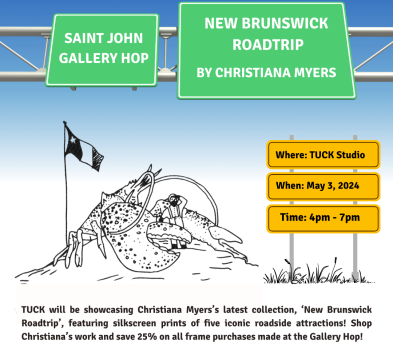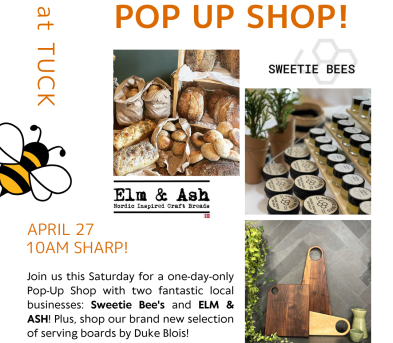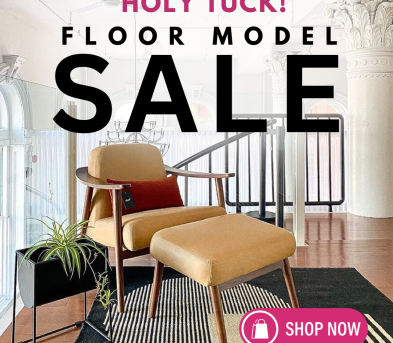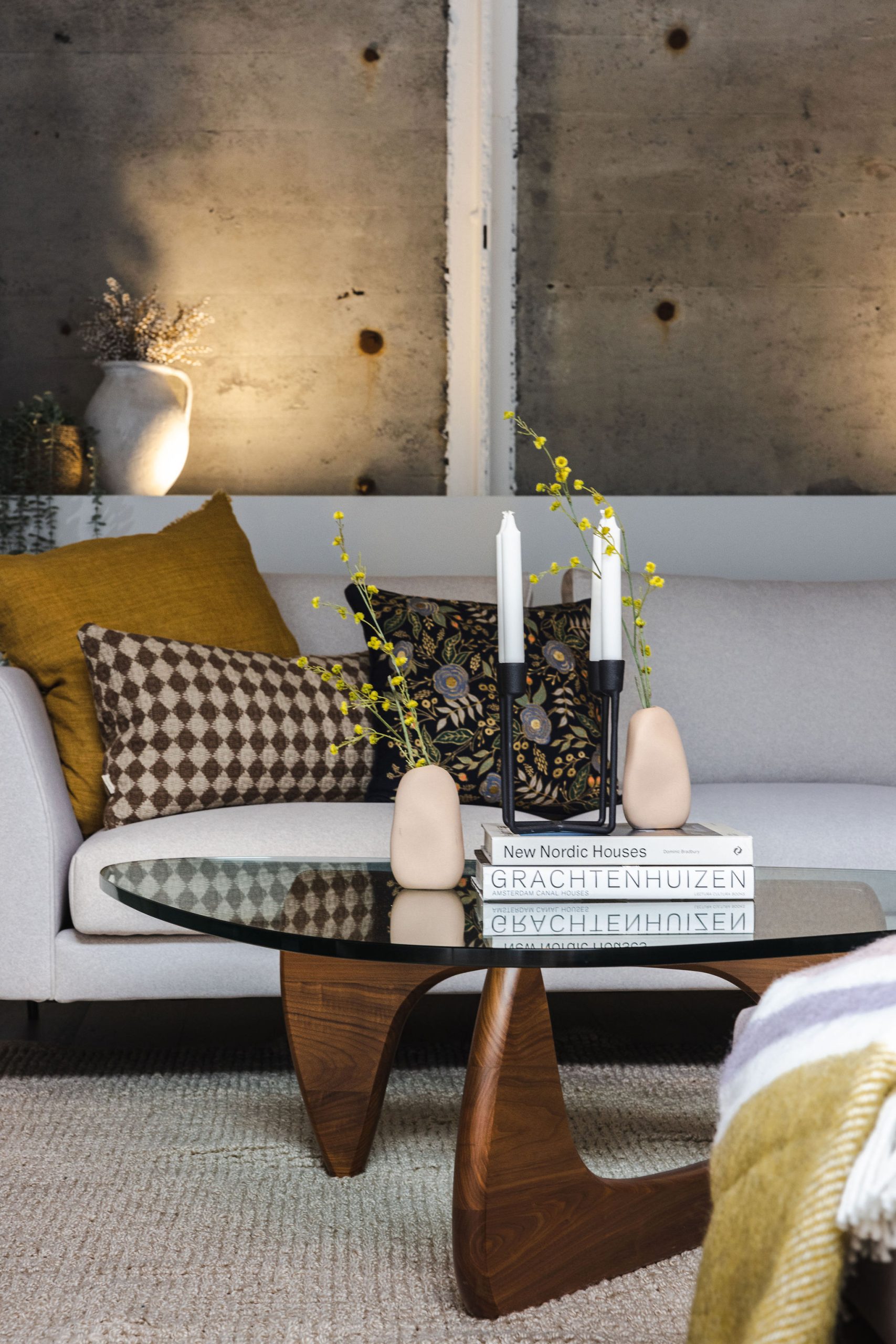HGTV Interview Judith Mackin interviews Iconic Industrial Designer – Harry Allen Part 1
GUEST BLOGGER
Judith Mackin is founder and creative director of Tuck Studio a furniture and decor store in Saint John, NB.
Interview with Iconic IndustrialDesigner Harry Allen Part 1
In 2008 my husband and I walked into a design studio in Toronto. Almost immediately, a hot pink pig at the end of the room caught my eye. Its literalism (it’s a highly-detailed resin cast of an actual piglet) was at once vaguely disturbing and strangely endearing. We bought it.
![]()
Our first Harry Allen purchase placed in our (previous) home – which, incidentally, was showcased as an HGTV Original Home Tour. Photo credit: Hemmings House HGTV
![]() That purchase constituted my initiation into the world ofHarry Allen. Several years later I’ve managed to incorporate his work into the majority of design projects I’ve done. I used his iconic ‘bank in the form of a pig’ resin sculpture as an inspiration for the logo of my interior design practice, punch inside.
That purchase constituted my initiation into the world ofHarry Allen. Several years later I’ve managed to incorporate his work into the majority of design projects I’ve done. I used his iconic ‘bank in the form of a pig’ resin sculpture as an inspiration for the logo of my interior design practice, punch inside.
That now iconic piggy bank, of course, constitutes only of a small fraction of the product Harry has designed. His interior design first reached critical acclaim in 1994 with his collaboration with Moss, SoHo’s design studio. Since then, he’s worked with industry heavy hitters like DuPont, Union, Metropolis and Aveda, to name just a few. His studio did a branding and product development with Dom Perignon, and his work is housed in prestigious galleries and museums, including the MoMA.
Left: A surprise thank you gift for client left on their mantle. Photo credit: Judith Mackin
![]()
![]()
Above: Harry's home in Bedford. Photo credit: Harry Allen Designs
Last month, I contacted his office to see if I could get a 5-minute interview with Harry. Much to my delight Harry ended up giving me three and a half hours of his Monday to talk about design. My visit ultimately included a tour of his design Studio, the loft he keeps above his studio, a walk around East Village with Ben (his basset hound), and a fabulous lunch.
Judith: Before I left the hotel to come meet you, my fifteen year old gave me the following advice: “Don’t act like a jerk. Be calm. Be yourself’. Great advice, but now that I’m here I’d be lying if I said I’m not a bundle of nerves. You probably get this a lot. How do you feel about this effect you have on people in your industry? You are ‘Harry Allen’ after all.
Harry: Strange question. I don’t really get that a lot, and it is difficult to get famous from being an industrial designer. I have not cultivated a “persona” to live up to. I hope people know me and respect me from my work. So I am very honored that I make you nervous, but get over it!
![]()
Harry Allen Design located in 207 Avenue A, East Village, on a crisp December afternoon. Photo credit: Judith Mackin
Judith: Tell me a bit about this building. When you purchased it, what renovations were required, its history, how you’ve apportioned space.
Harry: I bought the building where I live and work in 1998. It was a funeral home when I bought it, which of course was sort of creepy, but I could see beyond the decoration, and it was a perfect space for me. People always ask me if it scares me to live in an old funeral home. I guess the only issue would be ghosts, but honestly, if you were a ghost would you haunt the funeral home? I bought it from a very nice, happy Italian-American family and it had great vibes. I now work on the ground floor, live on the second and rent a few of the upstairs units.
![]()
Harry’s office. Photo credit: Judith Mackin
Judith: Good design always tells a story, or so we’re often told. With your production pieces your own stories, your life, your history is being told. I’m thinking specifically of your resin and marble roller-skates (Roller Stop) and Pickup (Toy Truck Bowl), and the fact that you use your own hand in the C’Mere hand hooks. How important is your narrative in your work?
![]() Harry: My work spans a very broad spectrum. My REALITY line that you are talking about is at a very personal end of the spectrum. And that is what has made it such a success. I always think of my basset hound [Ben, right] when I am working on REALITY. When I walk Ben down the street some people pass on by, but others stop and pet him or oogle him. And inevitably the people who respond have a personal story about a Basset Hound. "I walked by one every day on my way to school,” or “I had one names Daisy as a child," etc, etc.
Harry: My work spans a very broad spectrum. My REALITY line that you are talking about is at a very personal end of the spectrum. And that is what has made it such a success. I always think of my basset hound [Ben, right] when I am working on REALITY. When I walk Ben down the street some people pass on by, but others stop and pet him or oogle him. And inevitably the people who respond have a personal story about a Basset Hound. "I walked by one every day on my way to school,” or “I had one names Daisy as a child," etc, etc.
Those people love my Basset Hound too, and that is the sort of reaction I am going for with REALITY. The objects that I cast are interesting, or personal and they have a perspective. They are not for everyone but when they strike a chord they strike right to the heart and people buy them. So basically I just follow my interests. I spend a lot of time finding objects that are iconic, or interesting, or both but most of all I need to love them.
![]()
(Rollerstop) Harry’s Resin and Marble iconic roller skate functions as a bookend, door stop, or 1970's fetish object.
![]() (Grab Hand Hook) Cast from Harry’s hand. Grab is a catchall for keys, change, soap, or any small thing that needs a helpful hand. Photo credit: Areaware
(Grab Hand Hook) Cast from Harry’s hand. Grab is a catchall for keys, change, soap, or any small thing that needs a helpful hand. Photo credit: Areaware
Judith: Family also appears as a theme in your pieces, as in “My Brother’s Frame” and ‘Grans Candlestick’ belonged to your grandmother.’ Why this emphasis on family?
Harry: Family is just easy. My Aunt Betsy left the candlesticks to me, so I was already living with them, and loving them. When I start a new project it is very organic. I was explaining the frame project to my brother, and he had that old frame in his closet and it was just what I was looking for. I am blessed to have an amazingly supportive family, with whom I engage all of the time, and that just cannot help coming through in my most personal work.
![]()
My Brother’s Frame along with Gran’s Candlesticks in this Harry Allen resin rich photos.Also shown,(Banana Bowl) cast from a ripe bunch of bananas, this unusual and elegant bowl holds a good assortment of fruit and looks lovely even when fruitless. Photo credit: Areaware
Judith: This past year you recently designed a different kind of piggy bank, a radical departure from the ‘Bank in the form of a Pig’ you did for Areaware, something of a signature piece for you. The new Glass ‘Piggy bank’ for Steuben has a radically different price point: $100 - $250 for Areaware versus $2,000 for the Steuben, which is certainly going to limit its circulation. Why did you ‘go back’ to the pig? Is it, on any level, a comment -- ironic or otherwise -- on your first pig (if the Areaware pig was, in fact, your first pig)?
![]()
Glass ‘piggy bank’ by Harry Allen for Steuben. Photo credit: Harry Allen Designs
Harry: Bank in the Form of a Pig, was my first piggy bank, and I was surprised when Steuben asked me for a second pig. I though it was a very unoriginal request, but as I stewed on the fact that I was becoming the go-to-piggy-bank-designer, I realized that it was a perfect product for Steuben. I’m not sure if you know this, but they just went out of business. Very Sad.
Steuben, however, had become very well known for its collectible animals. So to apply that aesthetic to a functional product made sense. I just went with the flow. Steuben specialized in hand blown glass, so I made it very glassy with globs and bubbles and twists. I like developing completely new aesthetics, catered to individual clients. It was easy in the case of Steuben because their manufacturing dictated much of what their products looked like. If the aesthetic is very different it is OK to design the same object over and over.
There's more with Harry Allen coming tomorrow in part 2 -- find out what challenges him in his daily work, how he feels about there being "too much design in the world, not enough manufacturers to produce the design, and, at the other end of things, not enough consumers of design," his thoughts on interior design projects and much more.




